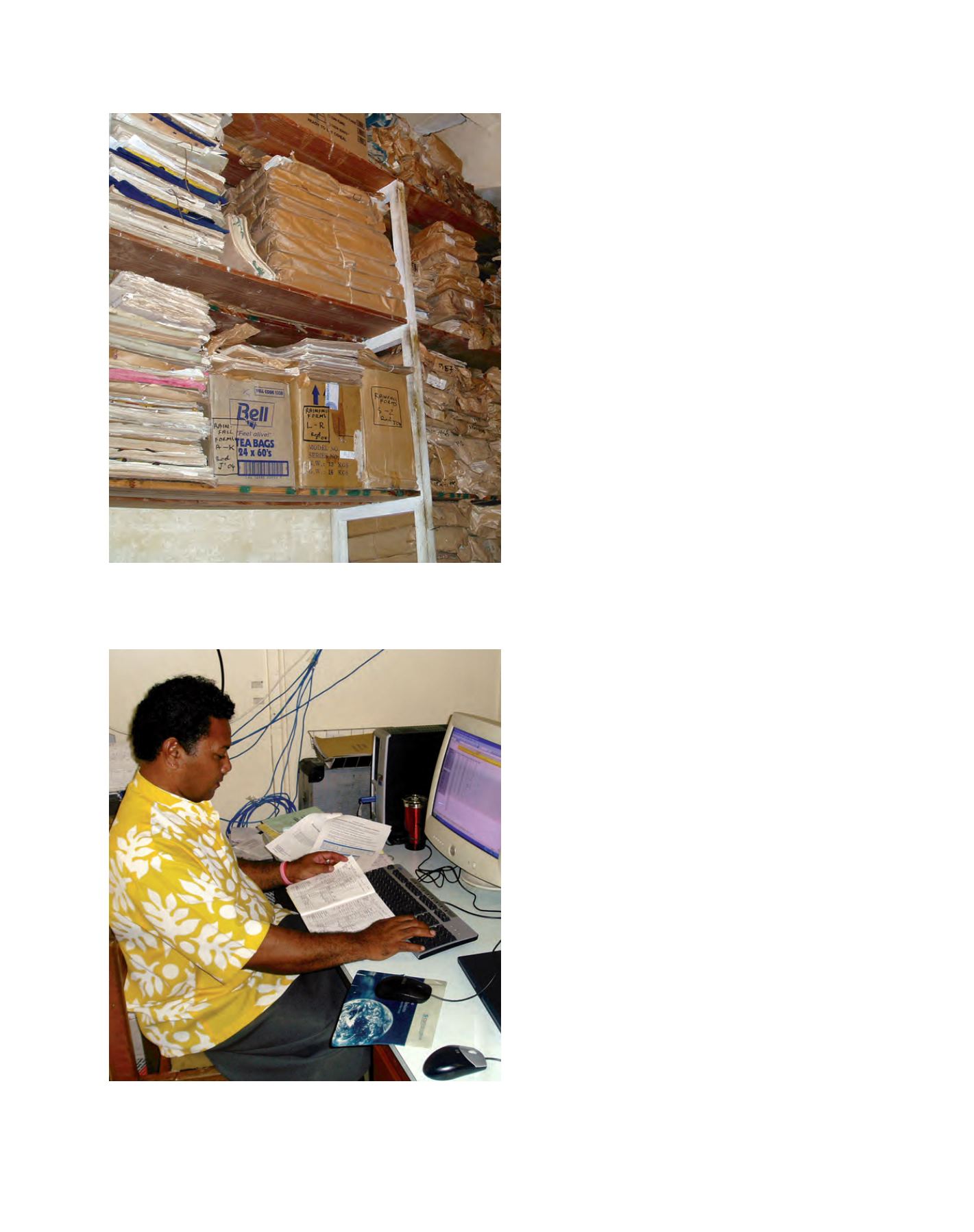

[
] 55
T
he
I
mpacts
and
I
mplications
of
C
limate
C
hange
and
V
ariability
least 30 years), reasonably complete, reliable, and
accessible. Unfortunately, while historical climate
observations are mostly available, their accessibility
has been hampered by a lack of skills and facilities
within nearly all countries in the Pacific Region
to adequately secure and manage the data. This
deficiency impedes the development of effective
information systems for managing climate variability
and change. For both scientific and practical reasons,
there is a compelling case for improving the capacity
of Pacific Island Meteorological Services to preserve
and manage their respective nation’s climatological
data and information, and to make them more easily
accessible.
For these reasons the Australian Bureau of
Meteorology, backed by funding from the Australian
Government, has been active over recent years in
data rescue and data management-related capacity-
building activities within the PICs. The work, which
commenced in 2005, initiated data rescue activities
in six countries (Solomon Islands, Kiribati, Vanuatu,
Papua New Guinea, Fiji and Samoa).
The aims of this project have been: to immediately
secure data at risk of loss or damage through a combi-
nation of moist tropical air, vermin and insecure
storage; to establish and train staff in sound records
management processes; and to recommend further
actions to preserve and improve access to the data.
While preserving original records is critical it is
only the first step in making the data available for
practical applications. However well-stored paper
records may be, the data remain difficult to access and
put to good use unless they are subsequently digitized
into a computer compatible form. In 2006 a project
commenced (funded initially by the then Australian
Greenhouse Office, and subsequently by the Australian
Agency for International Development), to install
Climate Data Management System (CDMS) software
in Pacific Island countries, to encourage digitization
of data from paper records, and the migration of data
from older, outmoded computerized systems. The
CDMS system used was ClimSoft,
3
a software package
specifically designed to accommodate the skills and
resourcing levels of developing and least-developed
countries. The software was installed and associated
training conducted in ten PICs during 2006-07.
This work initiated under PI-CPP is set to continue
under the Pacific Climate Change Science Project,
which is part of the Australian Government funded
International Climate Change Adaptation Initiative.
The new effort aims to support adaptation to climate
change, and improve climate change monitoring
in the climatically important Pacific Region for the
benefit of the global community. The project will also
contribute to the World Meteorological Organization
initiative to extend and improve existing CDMS func-
tionality to developing and least developed countries
in all parts of the world – notably Africa, the Pacific
and the Caribbean.
Early climate data were invariably recorded in paper-based formats. In tropical regions
such records can be subjected to harsh environmental conditions if not properly
stored, which can lead to the deterioration of the media and possible loss of the data
Image: Rod Hutchinson
The utility of climate data can only be fully realized when the data are keyed into a
digital database. ClimSoft is a database ideally suited to meet the needs of small
island developing states of the South Pacific
Image: Rod Hutchinson
















